- Guide Content
Ultimate AWS Lambda Python Tutorial with Boto3
AWS Lambda is a Function-as-a-Service offering from Amazon Web Services. AWS Lambda essentially created the service in 2014 with the launch of Lambda. AWS Lambda provides on-demand execution of code without the need for an always-available server to respond to the appropriate request.
AWS Lambda functions are run in containers that are dynamically created and deleted as needed based upon your application’s execution characteristics, allowing you to pay for only the compute you use rather than the constant availability of services like EC2.
In this article
Why Lambda with Python?
The 2020 Stack Overflow Developer Survey named Python one of the most beloved languages. Python has a strong foothold in a number of different industries, from web development to artificial intelligence and data science. It’s only natural, then, that many developers would like to rely on Python when working with their serverless functions. In this article, we’ll discuss using Python with AWS Lambda, exploring the process of testing and deploying serverless Python functions.
Given that the power of serverless technology is in the uniformity of its containers, there are some restrictions on the runtime and environment when working with Python in Lambda. The first is related to how Lambda deploys code itself – you’ll encounter extensive duplication of the deployed code itself. Additionally, Lambdas only support specific Python runtimes – see the list here.
In terms of the execution environment, there are a couple of things to be aware of:
- You are only given limited access to the operating system layer, meaning that you cannot rely upon operating-system-level packages.
- Lambda containers are extremely short-lived and are regularly recycled for use elsewhere in the system. This means you cannot debug your application based on operating system aspects, such as local file storage unless you ensure the function context doesn’t exist.
What is Boto3?
To make integration easy with AWS services for the Python language, AWS has come up with an SDK called boto3. It enables the Python application to integrate with S3, DynamoDB, SQS, and many more services. In Lambda Function, it has become very popular to talk to those services for storing, retrieving, and deleting the data.
In this article, we will try to understand boto3 key features and how to use them to build a Lambda Function.
Boto3 Key Features
Resource APIs
Resource APIs provide resource objects and collections to access attributes and perform actions. It hides the low-level network calls. Resources represent an object-oriented interface to AWS. It provides the resource() method of a default session and passes in an AWS service name. For example:
sqs = boto3.resource('sqs')
s3 = boto3.resource('s3')
Every resource instance has attributes and methods that are split up into identifiers, attributes, actions, references, sub-resources, and collections.
Resources can also be split into service resources (like sqs, s3, ec2, etc) and individual resources (like sqs.Queue or s3.Bucket). Service resources do not have identifiers or attributes otherwise the two share the same components.
Identifiers
An identifier is a unique value used by a resource instance to call actions.
Resources must have at least one identifier, except for the service resources (e.g. sqs or s3).
For example:
# S3 Object (bucket_name and key are identifiers) obj = s3.Object(bucket_name='boto3', key='test.py')
Action
An action is a method that makes a service call. Actions may return a low-level response, a list of new resource instances, or a new resource instance. For example:
messages = queue.receive_messages()
References
A reference is just like an attribute. It may be None or a related resource instance. The resource instance does not share identifiers with its reference resource. It is not a strict parent-to-child relationship. For example:
instance.subnet instance.vpc
Sub-resources
A sub-resource is similar to a reference. The only difference is that it is a related class rather than an instance. When we instantiate sub-resources, it shares identifiers with their parent. It is a strict parent-child relationship.
queue = sqs.Queue(url='...') message = queue.Message(receipt_handle='...')
Collections
A collection provides an iterable interface to a group of resources. A collection helps iterate over all items of a resource. For example:
sqs = boto3.resource('sqs')
for queue in sqs.queues.all():
print(queue.url)
Waiters
A waiter is similar to an action. A waiter will poll the status of a resource to check if the resource has reached a particular state. If it reaches the polled state, it will execute, or else it will keep polling unless a failure occurs. For example, we can create a bucket and use a waiter to wait until it is ready to use to retrieve objects:
bucket.wait_until_exists()
Service-specific High-level Features
Boto3 comes with several other service-specific features, such as automatic multi-part transfers for Amazon S3 and simplified query conditions for DynamoDB.
Building an AWS Lambda Application with Python Using Boto3
Now, we have an idea of what Boto3 is and what features it provides. Let’s build a simple Python serverless application with Lambda and Boto3.
The use case is when a file gets uploaded to S3 Bucket, a Lambda Function is to be triggered to read this file and store it in DynamoDB table. The architecture will look like below:

We want to use the Python language for this use case so we will take advantage of boto3 SDK to fasten our development work.
Step 1: Create a JSON File
Let’s first create a small json file with some sample customer data. This is the file we would upload to the S3 bucket. Let’s name it data.json.
#data.json
{
"customerId": "xy100",
"firstName": "Tom",
"lastName": "Alter",
"status": "active",
"isPremium": true
}
Step 2: Create S3 Bucket
Now, let’s create an S3 Bucket where the json file will be uploaded. Let’s name it boto3customer. We have created the bucket with all the default features for this example:
Step 3: Create DynamoDB Table
Let’s create a DynamoDB table (customer) where we will upload the json file. Mark customerid as a partition key. We need to ensure that our data.json file has this field while inserting it into the table else it will complain about missing the key.
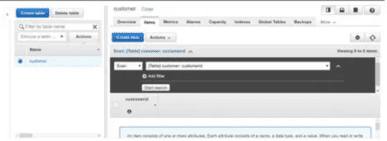
Step 4: Create Lambda Function
Here, we need to first create an IAM role that has access to CloudWatch Logs, S3, and DynamoDB to interact with these services. Then, we will be writing code using boto3 to do the data download, parse, and save into the customer DynamoDB table. Then, create a trigger that should integrate the S3 bucket with Lambda so that once we push the file in the bucket, it should be picked up by Lambda Function.
Let’s first create an IAM role. IAM Role needs to have at least Read access to S3, write access DynamoDB and Full access CloudWatch Logs service to log every event transaction:
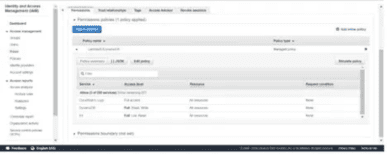
Now, create a function. Give a unique name to it and select Python 3.7 as runtime language:
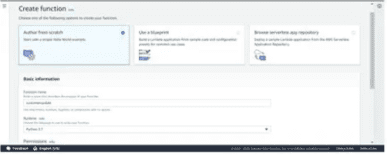
Now, select the role LambdaS3DyanamoDB we created in the earlier step and hit Create function button:
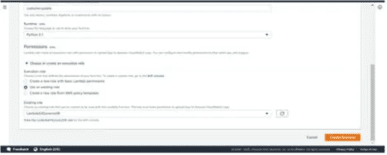
Now follow the below steps for Lambda Function:
- Write the python code using the boto3 resource API to load the service instance object.
- An event object is used to pass the metadata of the file (S3 bucket, filename).
- Then using action methods of s3_client, load S3 file data in the json object.
- Parse the json data and save it into the DyanamoDB table (customer)
#Code snippet
import json
import boto3
dynamodb = boto3.resource('dynamodb')
s3_client = boto3.client('s3')
table = dynamodb.Table('customer')
def lambda_handler(event, context):
# Retrieve File Information
bucket_name = event['Records'][0]['s3']['bucket']['name']
s3_file_name = event['Records'][0]['s3']['object']['key']
# Load Data in object
json_object = s3_client.get_object(Bucket=bucket_name, Key= s3_file_name)
jsonFileReader = json_object['Body'].read()
jsonDict = json.loads(jsonFileReader)
# Save date in dynamodb table
table.put_item( Item=jsonDict)
Next, create an S3 trigger:
- Select the Bucket name created in the earlier step.
- Select the Event type as “All object create events”.
- Enter suffix as .json
- Click on Add button
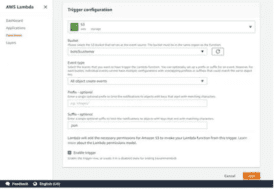
Lambda Function is now ready with all the configurations and setup.
Test the Lambda Function
Let’s test this Lambda function customer update.
- First, we need to upload a json file in the S3 bucket boto3customer.
- As soon as the file gets uploaded in S3 bucket, it triggers the customer update
- It will execute the code that receives the metadata of the file through the event object and loads this file content using boto3 APIs.
- Then, it saves the content to the customer table in DynamoDB.
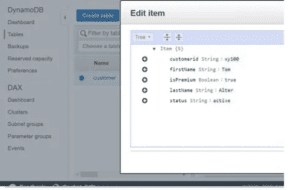
We can see the file content got saved in the DyanamoDB table.
This completes our use case implementation of a serverless application with Python runtime using the boto3 library.
Tips and Tricks for Working with Python in AWS Lambda
AWS Lambda functions provide a powerful tool in developing data flow pipelines and application request handlers without the need for dedicated server resources, but these functions are not without their downside. The following tips and tricks may help:
- Make extensive use of unit testing – given the distributed nature of serverless functions, having verification in place is important for peace of mind when deploying your functions that run infrequently. While unit and functional testing cannot fully protect against all issues, it gives you the confidence you need to deploy your changes.
- Beware of time limits – AWS Lambda functions contain inherent time limits in execution. These can go as high as 900 seconds but defaults to 3. If your function is likely to require long run times, ensure you configure this value properly.
- Leverage the pattern – It’s easy enough to take a simple Flask app and translate it into a monoservice Lambda function, but there are a lot of potential efficiency gains to be made from moving a step or two beyond the basics. Take the time to rebuild your application to take advantage of the event-driven nature of Lambda processing, and you can improve user experience with minimal effort.
- Make use of third parties – It’s powerful to have everything under your control, but it can also be distracting and time-consuming. Tools like Lumigo can provide you automated tracing and online debugging, removing the need to develop these tools from your backlog.
Summary
AWS Lambda is a powerful tool for event-driven and intermittent workloads. The dynamic nature of Lambda functions means that you can create and iterate on your functionality right away, instead of having to spend cycles getting basic infrastructure running correctly and scaling properly.
Python brings a powerful language with a robust environment into the serverless realm and can be a powerful tool with some careful application of best practices. In addition to general development practices focused on maintainability, tools like Lumigo can expand your serverless metrics reporting and give you the power you need to drive user value as quickly as possible.
Learn how easy AWS Lambda monitoring can be with Lumigo



